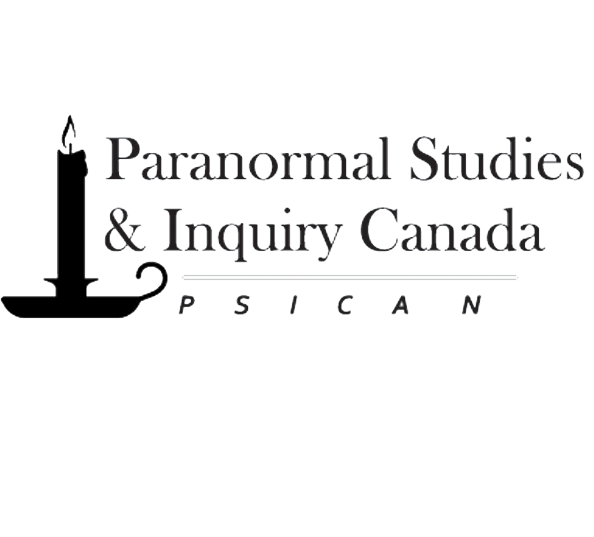Canadian historian Christopher Laursen reviews exceptional films, television series, visual arts and music that have imaginative paranormal themes. In this article, he looks at the outrageous and poignant Werner Herzog and Zak Penn mockumentary, Incident at Loch Ness.
In 2004, Werner Herzog supposedly embarked on the filming of a documentary about the world's most famous lake monster, The Enigma of Loch Ness. Produced by a blockbuster Hollywood screenwriter, Zak Penn (who wrote the second and third X-Men movies, the live action Inspector Gadget and Arnold Schwarzenegger's Last Action Hero), arthouse film director Herzog found himself at odds with trying to tell the story of a myth within the collective consciousness of humanity and Penn's eagerness to make a slick film to bring in the box office receipts.
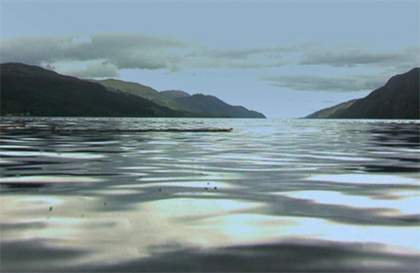
The eerie shot of Loch Ness at the start of the film.
Of course, the Hollywood types think the legend is balderdash, and Herzog himself doesn't really buy into it but he has a greater vision at stake. He hopes to pull out of it a greater poetic truth about humanity, as he has done in such films as Fitzcarraldo in which a steamship is hauled up the side of a mountain in the Amazon; or in his look into the mind of a man seeking fame, fortune and meaning in Grizzly Man; or his dramatization of the true mysterious case of a boy who had been locked in a cellar most of his life, Kasper Hauser.
"Of course you can tell it's made up," he says, pulling a famous Nessie photo off of his corkboard in the documentary on the making of his film, Incident at Loch Ness. At first glance, the photo appears to be the lake monster's head poking out of the waters from a distance, but looking closer, it is obvious that a scale-sized model has been placed in the water. "The movement of water cannot be miniaturized. It's probably only toy size." Werner bares his teeth as he considers the legend.
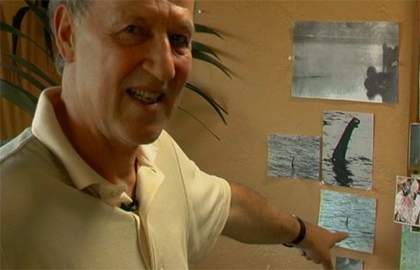
Werner Herzog points out his wall of Loch Ness monster photos.
"It shows very clearly that this whole thing about Loch Ness is more or less a figment of our fantasy. I like that much more than the real monster: what's going on in our collective dreams and collective nightmares." In the same breath, he heartily admits that he is seeking the "weird whackos" out there.
Upon his arrival in Inverness, Scotland, Herzog finds himself confronted with a few unexpected surprises courtesy of Zak Penn, including a sonar navigator who is actually a former Playboy model (Kitana Baker) and an obsessive cryptozoologist (Michael Karnow) who carries around samples of unknown animal parts in jars inside of his suitcase. Nothing is going according to plan, and Herzog suspects that his crew have ulterior motives that they are trying to hide from him - which in itself is a part of Herzog's own legendary status as a gonzo filmmaker.
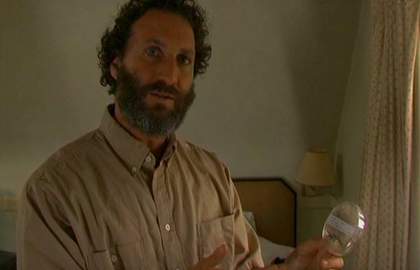
Michael Karnow shows off what may very well be Bigfoot hair. Note his fine beard.
Everyone, according to Herzog, thinks he is berserk and trying to "out-Hollywood Hollywood," but he insists he is staying true to his cinematic roots. The film documents the descent of his intent verses the powerful commercial vision that wishes to pull the director into the blockbuster realm. The two cinematic ideals are in a hardcore on-screen rasslin' match.
Moreso, Incident at Loch Ness is clear satire of how the mainstream media and entertainment industries treat mysteries and legends. It's all about hyping up the story and creating unbelievable adventure, but as this struggle between Herzog's purist documentary filmmaking ethics and Hollywood blockbuster exploitation heightens, there is a sense that the mystery itself is actually there, mocking the entire situation. The mystery itself becomes more blatantly present as the film progresses, forcing it into the Hollywood style.
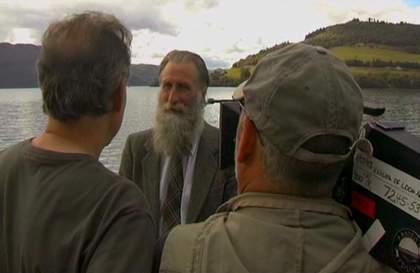
Herzog chooses all of his "Loch Ness experts" based on the quality of their beard.
The Incident at Loch Ness revels in Herzog's improvisational style. It is sort of the Blair Witch Project meets Curb Your Enthusiasm meets the mockumentaries of Christopher Guest (who made This Is Spinal Tap, Best in Show, A Mighty Wind and last year's For Your Consideration). Everything is tongue in cheek and over-the-top to reinforce the collision between the nature of reality, illusion and human nature.
If you haven't gathered yet, The Enigma of Loch Ness was never released. But this "making of" mockumentary becomes what the Enigma could never be: a commentary on the juxtapositions between styles of filmmaking and exploring the unknown. It's Herzog's silliest film as a result - a complete farcical romp that is far from subtle, complete with slapstick gags, self-mocking and Hollywood cheese. It's a favourite of many paranormal and cryptid enthusiasts for it so aptly pokes fun at investigation into these matters and how mass media covers them. A sugary treat for Herzog and Loch Ness buffs alike!
Ponder this, gentle readers...
Are lake monsters a mere fantasy in the collective imagination, or is there some basis to believe that large underwater dinosaur-type creatures inhabit lakes around the world?
Further reading:
Field Guide to Lake Monsters, Sea Serpents, and Other Mystery Denizens of the Deep by Loren Coleman and Patrick Huyghe. Tarcher Books, 2003.
Tim Dinsdale. Loch Ness Monster. London: Routledge and Kegan Paul, 1961.
"Is This Nessie?" by Ian Barron in Highland News, 17 April 2007:
